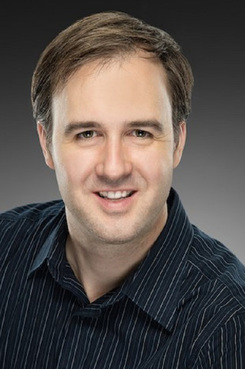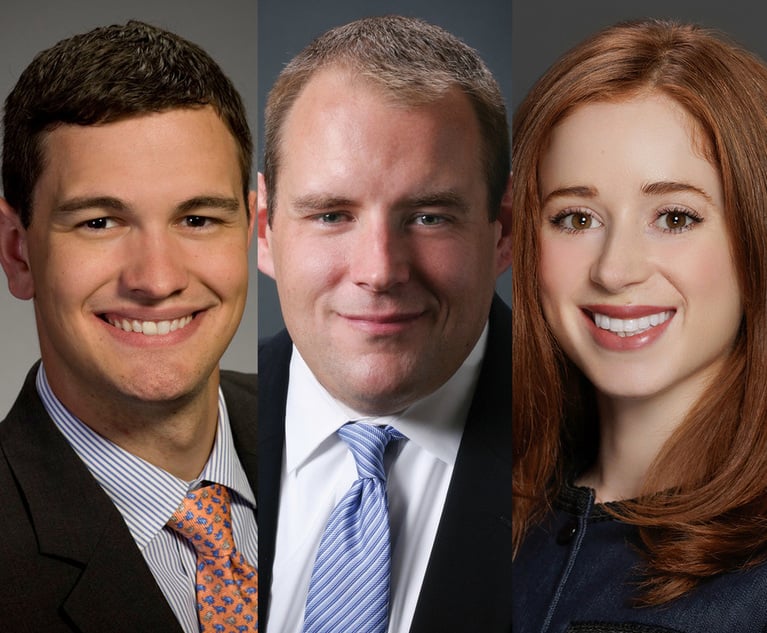Organize Your Data to Combat Alternative Facts
A fact is an assertion backed by evidence. An alternative fact shows its true face as fiction when it meets the evidence.
February 23, 2018 at 12:17 PM
6 minute read

Litigators have been confronting “alternative facts” since the dawn of litigation. Allegations in complaints, denials in answers and assertions from witnesses often come from the realm of fantasy. While false or fantastical assertions can result from a range of conditions—from intentional deceit to faulty memory—their consequences are almost always pernicious. They make cases harder and costlier to litigate, limit the possibilities of settlement and can take the focus off more important issues in the case where the parties may have honest differences about what happened and what the facts import.
“Alternative facts” are bad news in the sphere of litigation, and we should try to eliminate them whenever possible. It turns out that organization is the most effective tool we have in this battle.
Differentiating Facts from Alternative Facts
A fact is an assertion backed by evidence. An alternative fact shows its true face as fiction when it meets the evidence. With a fact, you're happy to look for evidence, even from hostile quarters. Proponents of alternative facts try to hide from or explain away the evidence. Evidence is how we tell lies and fabrications from facts. But we litigators don't just present the fact-finder with a pile of evidence; we must present evidence in a structured way—as part of a narrative—if we are to succeed in dismantling alternative facts in the eyes of the fact-finder.
Ask anyone who's recently filed a motion for summary judgment or tried a case: Organizing evidence into a fact-based narrative is extremely time-consuming and difficult—requiring counsel to support every fact with one or more pieces of evidence. This task can only be done well if counsel has command of all the evidence developed in the case: every page of every deposition, every document produced in discovery, every admission, every interrogatory response, every affidavit.
Systems to Organize and Understand
Each lawyer has her own system that she relies on to organize and then synthesize evidence. There are roughly three kinds of systems:
The Memory Treadmill: Reading every document as it comes in and making “mental notes” of its significance. The document is stored in a paper or electronic folder so it can be accessed later. Counsel constructs a detailed and vivid narrative of the case—complete with dates, times and names of every witness—but only in her memory.
However, unless counsel is gifted with truly photographic memory, she cannot remember exactly which documents (and specific pages) prove each fact in the narrative. Whenever evidence needs to be presented, counsel must re-read substantial portions of documents to determine exactly how to prove each fact, leading her to read the same document numerous times during the same case. Understanding the significance of each document means that counsel never gets off the treadmill of re-reading documents.
Word Kudzu: Maintaining a case chronology document, usually in a program like Microsoft Word or Excel. As the case progresses, entries are added to the document, and details are annotated with citations to evidence. An extremely organized document might even list the specific pages of documents that will be used to prove each fact.
As the case develops, the chronology document gets longer and more difficult to edit because nothing in it is linked. It grows with abandon, like a patch of kudzu. If a case becomes sufficiently complicated, counsel may stop maintaining the document, rendering it nearly useless.
The Cathedral: Reliance on software powered by a relational database containing a table of chronologically-ordered facts. Each fact is linked to one or more legal issues, witnesses and pieces of evidence. Because evidence is organized in a database, counsel can quickly and easily answer questions, such as, “Which documents (and pages) do we have that deal with the issue of the defendant's intent?”
While this incurs some cost, counsel is not forced to rely on a mental list of each document but focuses on seeing the bigger picture of the case and new opportunities for argument, proof and development of evidence. Preparing for trial and motion practice is vastly easier because there is no need to re-read documents that have been fully integrated in the case's database. Here, everything is in its place, the stained-glass windows of ingenious themes and motifs supported by solid buttresses and columns of evidence.
Which Systems Do Lawyers Use and Why?
From talking to thousands of lawyers about these issues, most of us amble between The Memory Treadmill and Word Kudzu. Buying software or learning a new system seems like too much work. Besides, we're doing just fine handling our cases the old way, thank you!
While it's true that lawyers have done great work relying on their memories and chronology documents, it's worth talking to those who've invested in new technology and skills. They typically experience not only a quantitative increase in efficiency but also a qualitative improvement in their advocacy, particularly when it comes to developing proof and presenting cases' clear and convincing narrative that banishes alternative facts.
Organization in Action
A few years ago, I handled a case with so many alternative facts that I almost gave up trying to sort them all out; the false or misleading statements were so pervasive in the case that it seemed difficult for the truth to get a toehold anywhere. Instead of giving up, I built a database that linked and cross-referenced every document in the case to the issues and facts that it proved—helping me prepare a deposition strategy that got the truth out.
The good news is that lawyers today don't have to build databases. There are several great software products available that enable lawyers and investigators to build well-structured fact chronologies with minimum fuss. Tools like these help lawyers get off the treadmill of repetitive tasks and focus on the more fulfilling, interesting and creative aspects of the practice. They also help us stop alternative facts and ensure that cases are decided fairly, based on what actually happened.
Jeff Kerr is a former litigator and now co-founder of case management solution CaseFleet.
This content has been archived. It is available through our partners, LexisNexis® and Bloomberg Law.
To view this content, please continue to their sites.
Not a Lexis Subscriber?
Subscribe Now
Not a Bloomberg Law Subscriber?
Subscribe Now
NOT FOR REPRINT
© 2025 ALM Global, LLC, All Rights Reserved. Request academic re-use from www.copyright.com. All other uses, submit a request to [email protected]. For more information visit Asset & Logo Licensing.
You Might Like
View All

CFPB Proposes Rule to Regulate Data Brokers Selling Sensitive Information
5 minute read
Trending Stories
- 1Gunderson Dettmer Opens Atlanta Office With 3 Partners From Morris Manning
- 2Decision of the Day: Court Holds Accident with Post Driver Was 'Bizarre Occurrence,' Dismisses Action Brought Under Labor Law §240
- 3Judge Recommends Disbarment for Attorney Who Plotted to Hack Judge's Email, Phone
- 4Two Wilkinson Stekloff Associates Among Victims of DC Plane Crash
- 5Two More Victims Alleged in New Sean Combs Sex Trafficking Indictment
Who Got The Work
J. Brugh Lower of Gibbons has entered an appearance for industrial equipment supplier Devco Corporation in a pending trademark infringement lawsuit. The suit, accusing the defendant of selling knock-off Graco products, was filed Dec. 18 in New Jersey District Court by Rivkin Radler on behalf of Graco Inc. and Graco Minnesota. The case, assigned to U.S. District Judge Zahid N. Quraishi, is 3:24-cv-11294, Graco Inc. et al v. Devco Corporation.
Who Got The Work
Rebecca Maller-Stein and Kent A. Yalowitz of Arnold & Porter Kaye Scholer have entered their appearances for Hanaco Venture Capital and its executives, Lior Prosor and David Frankel, in a pending securities lawsuit. The action, filed on Dec. 24 in New York Southern District Court by Zell, Aron & Co. on behalf of Goldeneye Advisors, accuses the defendants of negligently and fraudulently managing the plaintiff's $1 million investment. The case, assigned to U.S. District Judge Vernon S. Broderick, is 1:24-cv-09918, Goldeneye Advisors, LLC v. Hanaco Venture Capital, Ltd. et al.
Who Got The Work
Attorneys from A&O Shearman has stepped in as defense counsel for Toronto-Dominion Bank and other defendants in a pending securities class action. The suit, filed Dec. 11 in New York Southern District Court by Bleichmar Fonti & Auld, accuses the defendants of concealing the bank's 'pervasive' deficiencies in regards to its compliance with the Bank Secrecy Act and the quality of its anti-money laundering controls. The case, assigned to U.S. District Judge Arun Subramanian, is 1:24-cv-09445, Gonzalez v. The Toronto-Dominion Bank et al.
Who Got The Work
Crown Castle International, a Pennsylvania company providing shared communications infrastructure, has turned to Luke D. Wolf of Gordon Rees Scully Mansukhani to fend off a pending breach-of-contract lawsuit. The court action, filed Nov. 25 in Michigan Eastern District Court by Hooper Hathaway PC on behalf of The Town Residences LLC, accuses Crown Castle of failing to transfer approximately $30,000 in utility payments from T-Mobile in breach of a roof-top lease and assignment agreement. The case, assigned to U.S. District Judge Susan K. Declercq, is 2:24-cv-13131, The Town Residences LLC v. T-Mobile US, Inc. et al.
Who Got The Work
Wilfred P. Coronato and Daniel M. Schwartz of McCarter & English have stepped in as defense counsel to Electrolux Home Products Inc. in a pending product liability lawsuit. The court action, filed Nov. 26 in New York Eastern District Court by Poulos Lopiccolo PC and Nagel Rice LLP on behalf of David Stern, alleges that the defendant's refrigerators’ drawers and shelving repeatedly break and fall apart within months after purchase. The case, assigned to U.S. District Judge Joan M. Azrack, is 2:24-cv-08204, Stern v. Electrolux Home Products, Inc.
Featured Firms
Law Offices of Gary Martin Hays & Associates, P.C.
(470) 294-1674
Law Offices of Mark E. Salomone
(857) 444-6468
Smith & Hassler
(713) 739-1250







